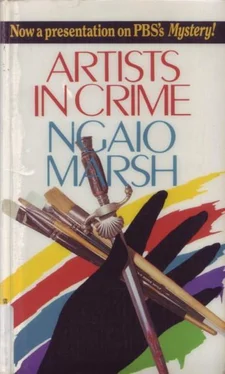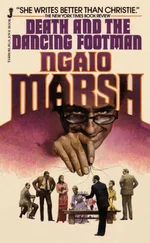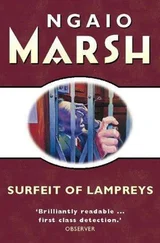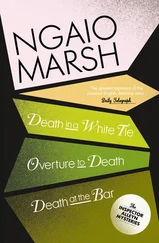Ngaio Marsh - Artists in Crime
Здесь есть возможность читать онлайн «Ngaio Marsh - Artists in Crime» — ознакомительный отрывок электронной книги совершенно бесплатно, а после прочтения отрывка купить полную версию. В некоторых случаях можно слушать аудио, скачать через торрент в формате fb2 и присутствует краткое содержание. Жанр: Классический детектив, на английском языке. Описание произведения, (предисловие) а так же отзывы посетителей доступны на портале библиотеки ЛибКат.
- Название:Artists in Crime
- Автор:
- Жанр:
- Год:неизвестен
- ISBN:нет данных
- Рейтинг книги:3 / 5. Голосов: 1
-
Избранное:Добавить в избранное
- Отзывы:
-
Ваша оценка:
- 60
- 1
- 2
- 3
- 4
- 5
Artists in Crime: краткое содержание, описание и аннотация
Предлагаем к чтению аннотацию, описание, краткое содержание или предисловие (зависит от того, что написал сам автор книги «Artists in Crime»). Если вы не нашли необходимую информацию о книге — напишите в комментариях, мы постараемся отыскать её.
Artists in Crime — читать онлайн ознакомительный отрывок
Ниже представлен текст книги, разбитый по страницам. Система сохранения места последней прочитанной страницы, позволяет с удобством читать онлайн бесплатно книгу «Artists in Crime», без необходимости каждый раз заново искать на чём Вы остановились. Поставьте закладку, и сможете в любой момент перейти на страницу, на которой закончили чтение.
Интервал:
Закладка:
“You look like a miniature owl,” said Alleyn and sat on the bed.
“Are they tucked away comfortably?”
“They are. Both besotted with adoration of you.”
“Darling! Did I show off?”
“Shamelessly.”
“I do like your Mr. Fox, Roderick.”
“Isn’t he splendid? Mum— ”
“Yes, darling?”
“This is a tricky business.”
“I suppose so. How is she?”
“Who?”
“Don’t be affected, Roderick.”
“We had two minor rows and one major one. I forgot my manners.”
“You shouldn’t do that. I don’t know, though. Perhaps you should. Who do you think committed this horrible crime, my dear?”
“Garcia.”
“Because he was drugged?”
“I don’t know. You won’t say anything about— ”
“Now, Roderick!”
“I know you won’t.”
“Did you give her my invitation?”
“Unfortunately we were not on them terms. I’ll be up betimes in the morning.”
“Give me a kiss, Rory. Bless you, dear. Good night.”
“Good night, little mum.”
CHAPTER XIV
Evidence from a Twig
Alleyn and Fox were back at Tatler’s End House at seven o’clock in the thin chilly light of dawn. A thread of smoke rose from one of the chimneys. The ground was hard and the naked trees, fast, fast asleep, stretched their lovely arms against an iron sky. The air was cold and smelt of rain. The two men went straight to the studio, where they found a local constable, wrapped in his overcoat, and very glad to see them.
“How long have you been here?” asked Alleyn.
“Since ten o’clock last night, sir. I’ll be relieved fairly soon — eight o’clock with any luck.”
“You can go off now. We’ll be here until then. Tell Superintendent Blackman I said it was all right.”
“Thank you very much, sir. I think I’ll go straight home. Unless— ”
“Yes?”
“Well, sir, if you’re going to work here, I’d like to look on — if it’s not a liberty, sir.”
“Stay, by all means. What’s your name?”
“Sligo, sir.”
“Right. Keep your counsel about our business. No need to tell you that. Come along.”
Alleyn led them to the studio window. He released the blind and opened the window. The ledge outside was rimy with frost.
“Last night,” said Alleyn, “we noticed certain marks on this window-sill. Look first of all at the top of the stool here. You see four marks — indentations in the surface?”
“Yes, sir.”
“We’re going to measure them.”
Alleyn produced a thin steel tape and measured the distance between the indentations. Fox wrote the figures in his note-book.
“Now the window-sill. You see these marks?” He pointed to two lateral marks, shiny and well defined, like shallow grooves. Alleyn measured the distance between them and found that it corresponded exactly with the previous figure. The width of the marks, the depth, and the appearance were the same as those on the stool.
“Garcia had his model on a small wheeled platform,” said Alleyn. “Now, Malmsley told us that Garcia proposed to wheel the model into the case and then put the whole thing on board whatever vehicle called to collect it. I think he changed his mind. I think he put the empty crate in the vehicle, drew the stool up to the sill, and wheeled the model over the sill into the crate, and aboard the caravan which was backed up to the window in the lane outside.”
“The caravan, sir?” asked Sligo. “Was it a caravan?”
“Lock this place up and come along outside. You can get over the sill, but don’t touch those two marks just yet. Jump well out to the side and away from the tyre-tracks.”
In the lane Alleyn showed them the traces left by the wheels. They had been frozen hard.
“Bailey has taken casts of these, but I want you to note them carefully. You see at once that the driver of the van or whatever it was did a good deal of skirmishing about. If there were any footprints within twelve feet of the window, they’ve been obliterated. Farther out are the traces of the mortuary van, blast it. The caravan tracks overlap, and there are four sets of them. But if you look carefully, you can pick out the last impression on top of all the others. That’s when the van was finally driven away. The next set, overlaid by these, represents the final effort to get in close to the window. Damn! it’s beginning to rain. This will be our last chance in the lane, so let’s make the most of it. Observe the tread, Sligo. There, you see, is the clear impression of a patch. I’ll measure the distance between the wheels and the width of the tyres. There a little oil has dripped on the road. The van or whatever it is has been recently greased. It was backed in and the brakes jammed on suddenly, but not quite suddenly enough. The outer edge of the window-sill has had a knock. The front wheels were turned after the vehicle had stopped. There are the marks. From them we get the approximate length of the wheel-base. Out in the middle of the lane they disappear under the tracks of more recent traffic. Now look at the branches of that elm. They reach across the lane almost to our side, and are very low. I wonder the county councillors have not lopped them down. Do you see that one or two twigs have been snapped off? There’s been no wind, and the breaks are quite recent. See here!”
He stooped and picked up a broken twig.
“It is still sappy. There are several. One quite close to the studio wall, and there’s another across the lane. If it should happen they were snapped off by the top of a vehicle, it must have moved from one side to the other. It is a fair chance, isn’t it, that they were broken by our van, and, if this is so, they give an idea of its height. Right?”
“That’s right, sir,” said Mr. Sligo, breathing loudly through his nostrils.
“You know all this sort of stuff, of course,” said Alleyn, “but it’s a characteristic example of outside work. Now come along to the garage.”
They walked along the lane through a wide entrance into the garage yard. Alleyn unlocked the garage doors and broke the police tape. It had begun to rain steadily.
“I took some measurements here last night, but it would be as well to verify them. Suppose you have a stab at it, Sligo.”
Sligo, intensely gratified, measured the width of the tyres and the wheel-base.
“The tyres are the same, sir. Look here, sir, here’s the patch on the rear tyre on the driving side. We found the trace on the left-hand as you faced the window, sir, so she was backed all right.”
“Good,” said Alleyn. “That’s the way, Sligo. Now take a look at the doorstep. Wait a moment. I’ll just have a go at the handle for prints.”
He opened his bag and got out his insufflator. The grey powder showed no prints on the door or doorknob. Alleyn closely examined the three steps, which were worn and dirty.
“Don’t touch these,” he said, and opened the door.
“Now then, Sligo— ”
“There they are, sir, there they are. Same marks on the top step. That’s the marks of them little wheels, sir, isn’t it?”
“I think so. Check them to make sure. Here are the measurements of the scars on the window-sill.”
Out came Sligo’s tape again.
“It’s them, for sure,” he said.
“Now have a look on the roof. If you climb on that bench, you’ll do no harm. Co carefully, though. You never know if you won’t spoil a perfectly good bit of evidence in the most unlikely spot.”
Sligo mounted the bench like a mammoth Agag, and peered over the roof of the caravan.
“Eh, there’s a-plenty of scratches, sir, right enough, and Gor’, Mr. Alleyn, there’s a bit of a twig jammed between the top roofing and the frame. Dug into the crack. Gor’, that’s a bit of all right, isn’t it, sir?”
Читать дальшеИнтервал:
Закладка:
Похожие книги на «Artists in Crime»
Представляем Вашему вниманию похожие книги на «Artists in Crime» списком для выбора. Мы отобрали схожую по названию и смыслу литературу в надежде предоставить читателям больше вариантов отыскать новые, интересные, ещё непрочитанные произведения.
Обсуждение, отзывы о книге «Artists in Crime» и просто собственные мнения читателей. Оставьте ваши комментарии, напишите, что Вы думаете о произведении, его смысле или главных героях. Укажите что конкретно понравилось, а что нет, и почему Вы так считаете.







